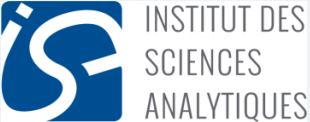|
Introduction
Every day pesticides and pharmaceutical compounds are introduced into aquatic ecosystems by humans. Most of these contaminants are persistent and accumulated by the aquatic organisms, in which they can be metabolized and have harmful effects, especially on biological functions. The simultaneous study in an organism of these pollutants presence and their effects on biological functions, with the help of protein biomarkers, is interesting. Indeed the combination of multiple “OMICS” approaches, like metabolomics and proteomics, provides complementary and invaluable information and allows a more complete understanding of biological processes.
In this study, we will develop a Solid Phase Extraction (SPE) method to separate proteins and metabolites from a sample, in two fractions, analysed then by LC-MS/MS. Here, samples containing Human Serum Albumin (HSA) and six contaminants are used to develop this method. Thereafter, samples from model test species for ecotoxicology studies, Gammarus fossarum, subjected to different pollutants, will be used.
Experimental conditions
Chemicals and Reagents:
HSA, Trypsin and the six compounds (Ketoprofen, Tetracycline, Chlortetracycline, Metsulfuronmethyl, Paracetamol and Diuron) were purchased from Sigma-Aldrich, and solvents (DMSO, MeOH, H2O and Formic Acid (FA)) from Fisher.
Sample preparation:
HSA was digested by Trypsin, then diluted to a concentration of 8ppm. The 6 metabolites were solvated and diluted to a concentration of 1 ppm. Then, 1 ml of each solution were pipetted and completed with 3 mL of H2O into a 10mL volume and mixed.
Solid Phase Extraction:
SPE was made with Oasis® HLB 30cc Cartridge from Waters. After optimizations (solvent, volume, quantity), the following protocol was developed:
• Conditioning: 1mL MeOH, then 1mL H2O+0.5% FA
• Spiking: 800 µL of the prepared sample
• Wash: 1 mL of DMSO/H2O (50/50) +0.5% FA
• Elution: 2mL of MeOH/H2O (75/25) +0.5% FA
Both Wash and Elution fraction were recuperated, then dried to an approximate 10 µL volume in an Azote Evaporator, completed to 100 µL with ACN/H2O (10/90) +0.1 FA.
Liquid chromatography-mass spectrometer:
Fractions obtained were separated and analysed by LC-MS/MS, composed of a liquid chromatography system Perkin Elmer 275 Series coupled with tandem mass spectrometry SCIEX® 5500. A C18 chromatography column (3 μm, 1mm*10 cm, Waters) and a triple quadrupole mass analyser in Selected Reaction Monitoring (SRM) mode were used.
Results
As showed in Figure1, we observe that HAS (upper panel) has been nearly all eluted (> 90%) from the SPE cartridge with the washing solvent. As to the compounds (lower panel), five of the six are recovered with the elution fraction. However tetracycline is mostly in the washing fraction because it is affected by the strong polarity of DMSO contained in washing solvent. But it remains an exception. These results seem encouraging but they must be moderate. Indeed other compounds and proteins should be analysed and studied before concluding
Conclusion
Solid Phase Extraction shows a true potential as a method to separate proteins and metabolites. Further studies should be undertaken to confirm these results, and if proved, validate this method to begin analysis on Gammarus Fossarum.
|
|

Comparison between wash and elution fractions of four HSA peptides peaks areas (upper panel) and of six compounds peak areas (lower panel)
|



